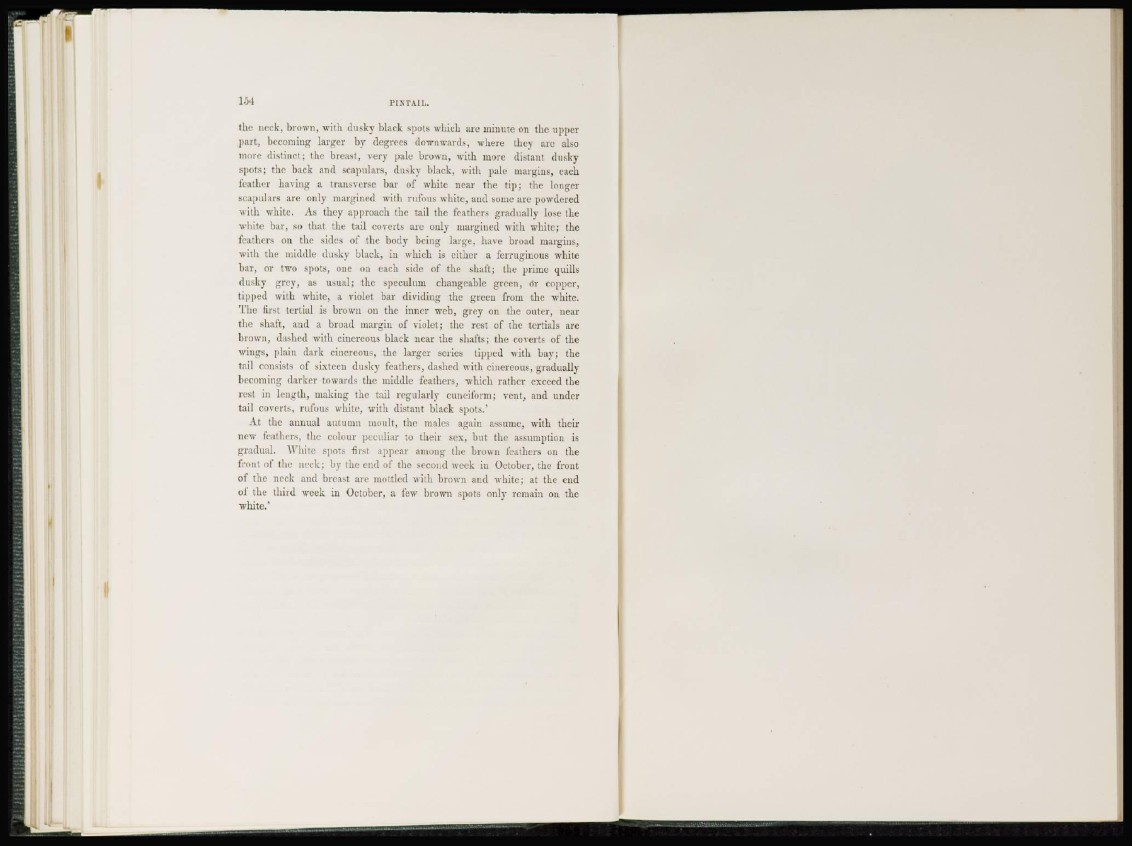
the Deck, brown, with dusky black spots which arc minute on the upper
part, becoming larger by degrees downwards, where they arc also
more distinct; the breast, very pale brown, with more distant dusky
spots; the back and scapulars, dusky black, with pale margins, each
feather having a transverse bar of white near the tip; the longer
scapulars arc only margined with rufous white, and some are powdered
with white. As they approach the tail the feathers gradually lose the
white bar, so that the tail coverts arc only margined with white; the
feathers on the sides of the body being large, have broad margins,
with the middle dusky black, in which is cither a ferruginous white
bar, or two spots, one on each side of the shaft; the prime quills
dusky grey, as usual; the speculum changeable green, Or copper,
tipped with white, a violet bar dividing the green from the white.
The first tertial is brown on the inner web, grey on the outer, near
the shaft, and a broad margin of violet; the rest of the tcrtials are
brown, dashed with cinereous black near the shafts; the coverts of the
wings, plain dark cinereous, the larger series lipped with bay; the
tail consists of sixteen dusky feathers, dashed with cinereous, gradually
becoming darker towards the middle feathers, which rather exceed the
rest in length, making the tail regularly cuneiform; vent, and under
tail coverts, rufous white, with distant black spots.'
At the annual autumn moult, the males again assume, with their
new feathers, the colour peculiar to their sex, but the assumption is
gradual. White spots first appear among the brown feathers on the
front of the neck; by the end of the second week in October, the front
of the neck and breast are mottled with brown and white; at the end
of the third week in October, a few brown spots only remain on the
white.'